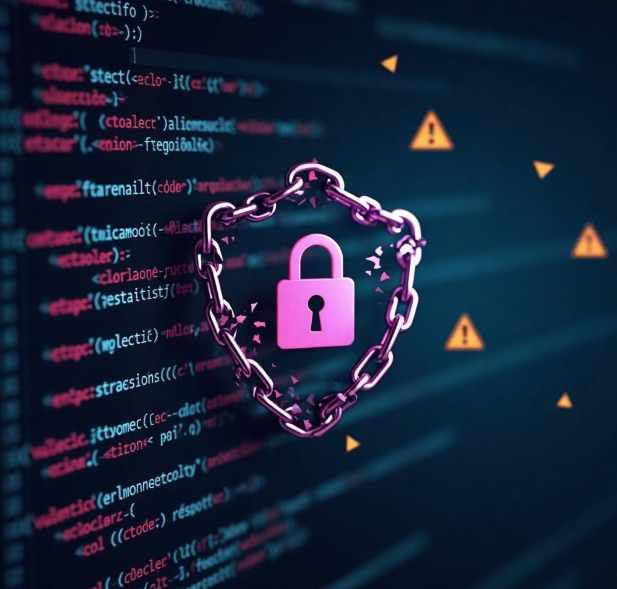Smart Contract Auditing and Vulnerability Detection in Blockchain Development
- latest articles
- 1.DApp Development & Customization: Merging Diverse Market Needs with User Experience 2.Analysis of the Core Technical System in DApp Project Development 3.How to achieve cross-chain interoperability in Web3 projects? 4.How does the tokenization of points reconstruct the e-commerce ecosystem? 5.How to Set and Track Data Metrics for a Points Mall? 6.What is DApp Development? Core Concepts and Technical Analysis 7.Inventory of commonly used Web3 development tools and usage tips 8.Development of a Distribution System Integrated with Social E-commerce 9.Six Key Steps for Businesses to Build a Points Mall System 10.What is DApp Development? A Comprehensive Guide from Concept to Implementation
- Popular Articles
- 1.Future Trends and Technology Predictions for APP Development in 2025 2.Analysis of the DeFi Ecosystem: How Developers Can Participate in Decentralized Finance Innovation 3.From Zero to One: How PI Mall Revolutionizes the Traditional E-commerce Model 4.DAPP Development | Best Practices for Professional Customization and Rapid Launch 5.Recommended by the Web3 developer community: the most noteworthy forums and resources 6.From Cloud Computing to Computing Power Leasing: Building a Flexible and Scalable Computing Resource Platform 7.How to Develop a Successful Douyin Mini Program: Technical Architecture and Best Practices 8.Shared Bike System APP: The Convenient Choice in the Era of Smart Travel 9.How to Create a Successful Dating App: From Needs Analysis to User Experience Design 10.From Design to Development: The Complete Process of Bringing an APP Idea to Life
With the continuous development and popularization of blockchain technology, smart contracts, as a core component of blockchain, are being widely applied in various fields such as decentralized finance (DeFi), supply chain management, and digital identity authentication. The automated execution and trustless nature of smart contracts make them an ideal choice for many applications. However, the complexity of smart contracts also brings potential security risks. The emergence of smart contract vulnerabilities can lead to financial losses, privacy breaches, and even affect the security of the entire blockchain network. Therefore, auditing and vulnerability detection of smart contracts are particularly important.
Concept and Role of Smart Contracts
Smart contracts are self-executing protocols running on the blockchain, with their terms and conditions clearly defined in the contract code and automatically executed through the blockchain network. They enable transactions without intermediaries, reducing the risks of human intervention and operational errors. The role of smart contracts lies in reducing transaction costs and time through automated code execution while ensuring transparency and immutability of transactions.
However, as a type of program, smart contracts still face many security issues similar to traditional software development. One of the most common challenges is vulnerabilities. Once a smart contract is deployed on the blockchain network, it cannot be modified, meaning that any vulnerabilities in the contract may persist for a long time without timely fixes, posing significant potential risks.
Common Vulnerabilities in Smart Contracts
During the development of smart contracts, many vulnerabilities arise due to improper coding, lack of security awareness, or design flaws. Below are some common smart contract vulnerabilities:
Reentrancy Attack
Reentrancy attacks are one of the most well-known smart contract vulnerabilities. They typically occur when a smart contract interacts with an external contract. If the external contract calls the smart contract again during the interaction, causing the original transaction logic to behave abnormally, attackers can maliciously withdraw funds repeatedly in this manner. The most famous example is the 2016 DAO attack, where the attacker exploited a reentrancy vulnerability to steal a large amount of Ethereum from the DAO contract.Integer Overflow and Underflow
If integer types used in smart contracts are not properly range-checked, overflow or underflow issues may occur. For example, during operations such as addition, subtraction, multiplication, or division in a contract, if the value exceeds the maximum representable value of the integer type, overflow occurs, leading to unexpected results. To avoid such issues, developers should use secure math libraries, such as OpenZeppelin's SafeMath library.Timestamp Dependency
Some smart contracts rely on block timestamps to control certain logic (e.g., the deadline of a voting system). However, block timestamps are not entirely accurate, as miners can manipulate timestamps within a certain range. This may cause the contract's behavior to deviate from expectations or even be exploited by attackers for manipulation.Access Control Issues
Access control issues in smart contracts often arise in function calls. If access control is improperly managed, malicious users may call functions with administrative privileges, leading to malicious operations on the contract. For example, without restricted access permissions, anyone could alter critical contract information or transfer funds.Front-running
Front-running refers to attackers using undisclosed transaction information to predict transaction order, inserting their own transactions ahead of others to gain personal benefits. Although front-running primarily occurs in decentralized exchanges (DEX), it can also affect the execution results of smart contracts, causing the contract's objectives to fail.
Necessity of Smart Contract Auditing
Since smart contracts cannot be modified once deployed on the blockchain, their security is of utmost importance. Smart contract auditing is a systematic code review process aimed at detecting vulnerabilities, logical errors, and potential security risks in contracts. Through in-depth analysis of smart contract code, auditing teams can identify potential security threats and propose fixes, thereby reducing the risk of contract attacks.
The necessity of smart contract auditing is reflected in the following aspects:
Ensuring Fund Security
Smart contracts often involve the storage and transfer of assets. If vulnerabilities or security risks exist, attackers may steal funds from the contract. Smart contract auditing can promptly identify and fix potential vulnerabilities, ensuring the security of contract funds.Enhancing Contract Credibility
For users of blockchain applications, contract security directly affects their trust. If a project's smart contract has not been audited, users may doubt its security and choose not to participate. Audited smart contracts can increase a project's credibility and enhance user trust.Compliance with Regulatory Requirements
In some regions, blockchain projects must comply with specific legal and regulatory requirements. Smart contract auditing is not only for discovering vulnerabilities but also for ensuring that contracts adhere to relevant regulations, avoiding legal sanctions due to compliance issues.Improving Smart Contract Quality
Smart contract auditing is not only for identifying security vulnerabilities but also for helping developers improve code quality. During the review, auditors provide suggestions for improvement, making the contract more efficient, maintainable, and reducing potential errors.
Smart Contract Auditing Process
Smart contract auditing is a complex process, typically divided into the following steps:
Requirements Analysis
Before starting the audit, the auditing team communicates with developers or project stakeholders to understand the smart contract's functional requirements, design goals, and the business scenarios it faces. This step helps determine the focus and scope of the audit.Code Review
The auditing team conducts a detailed analysis of the smart contract's code, checking for known vulnerabilities, logical errors, or unreasonable designs. Auditors typically use a combination of static analysis tools and manual inspection to ensure every line of code meets security standards.Vulnerability Testing
The auditing team uses automated tools to scan the smart contract for vulnerabilities and simulates attacker behavior through penetration testing. This approach helps identify potential vulnerabilities and security risks.Security Report
After the audit is completed, the auditing team generates a detailed security report listing discovered vulnerabilities, risks, and improvement suggestions. Project stakeholders can make modifications and optimizations based on the report's recommendations.Fixes and Re-audit
After the smart contract is modified and fixed, the auditing team re-audits the updated contract to ensure issues are resolved and the contract's security is enhanced.
Techniques and Tools for Vulnerability Detection
Smart contract vulnerability detection typically relies on techniques such as static analysis, dynamic analysis, and symbolic execution. Below are some commonly used vulnerability detection tools and techniques:
Mythril
Mythril is an open-source smart contract analysis tool that performs static analysis on Solidity-written smart contracts, detecting common vulnerabilities such as reentrancy attacks, integer overflows, and access control issues.Slither
Slither is an efficient static analysis tool designed to help developers identify potential vulnerabilities and insecure code in Solidity smart contracts. It not only detects vulnerabilities but also provides code optimization suggestions.Oyente
Oyente is a symbolic execution-based tool specifically used to detect security vulnerabilities in Ethereum smart contracts. By analyzing the contract's execution paths, it checks for issues such as reentrancy attacks and timestamp dependencies.Myco
Myco is an emerging smart contract security tool that combines static and dynamic analysis techniques, capable of detecting vulnerabilities that traditional tools may miss.
Challenges and Prospects of Smart Contract Auditing
Although smart contract auditing plays a key role in improving security, it also faces some challenges. For example, the complex code structure of smart contracts and varying levels of developer experience make auditing work challenging. Additionally, security vulnerabilities in smart contracts are often highly specialized, requiring auditors to possess in-depth knowledge of blockchain technology and attack methods.
In the future, with the continuous development of blockchain technology, smart contract auditing will gradually become a standardized and automated process. AI-based vulnerability detection tools are expected to improve the efficiency and accuracy of vulnerability discovery, helping developers identify and fix potential issues more quickly.
Conclusion
As an important component of blockchain technology, the security of smart contracts is crucial for the healthy development of the entire blockchain ecosystem. Through effective smart contract auditing and vulnerability detection, security risks in smart contracts can be reduced, user trust can be enhanced, and the stability and sustainability of blockchain projects can be ensured. As blockchain technology continues to advance, the technical means for smart contract auditing and vulnerability detection will also evolve to address increasingly complex and diverse security challenges.
-

How to achieve cross-chain interoperability in Web3 projects?
With the continuous development of WEB3 technology, Web3 has gradually become an···
-

Inventory of commonly used Web3 development tools and usage tips
With the continuous development of blockchain technology, Web3 has become a hot ···
-

Web3 development trend prediction: analysis of future technology directions and application scenarios
With the gradual development of blockchain technology, the concept of Web3 has m···

 Blockchain
Blockchain












